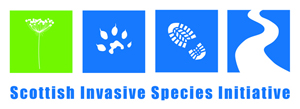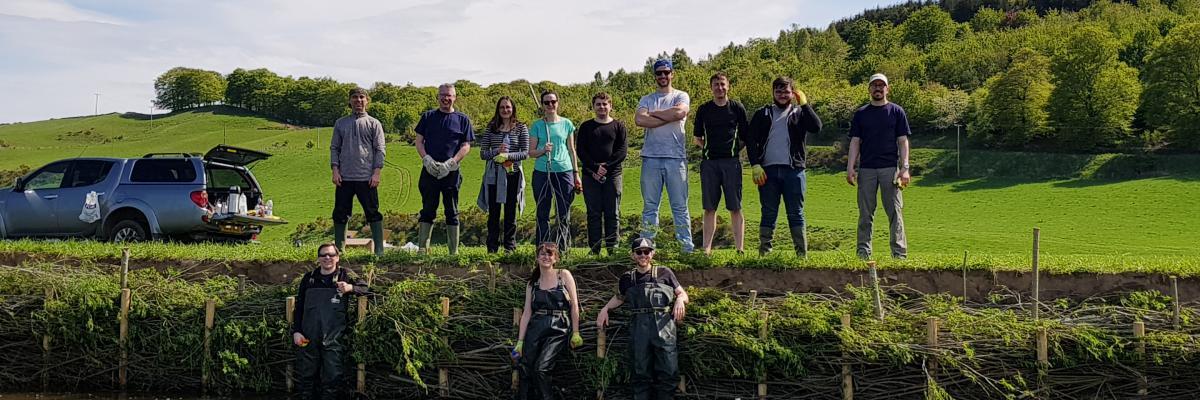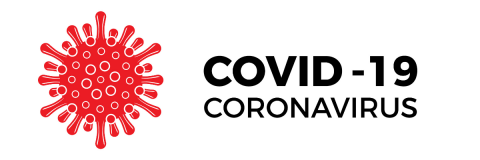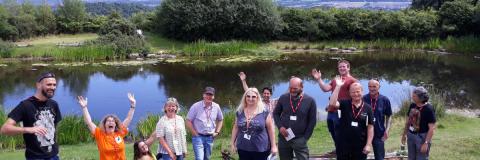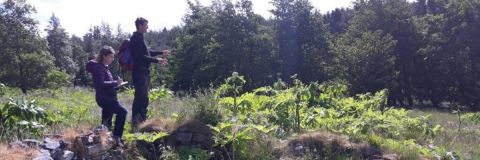*Please read our Coronavirus COVID-19 update here*
How can you help?
There are a variety of ways in which you can get involved with the Scottish Invasive Species Initiative. Our main volunteering opportunities are described below.
However please don’t let this constrain you! If you have a skill that could support our project, we’d love to hear from you. Photographers, videographers, drone operators, bloggers, artists etc would also all be assets and welcomed to our work.
You can also help by reporting any sightings to us of key invasive species. Report an invasive plant sighting or a mink sighting.
N.B. We have a defined project area of northern Scotland - our project area is Highland/Eastern Perthshire, Angus, Aberdeenshire, Moray and northern Highlands. View project area. We are not undertaking any invasive species control work, nor can support any volunteering, south of Perth.
If you are interested in any of the below opportunities please complete the on-line registration form. We will then match you with your local contact in your area and they will get back in touch with you about local volunteering opportunities.
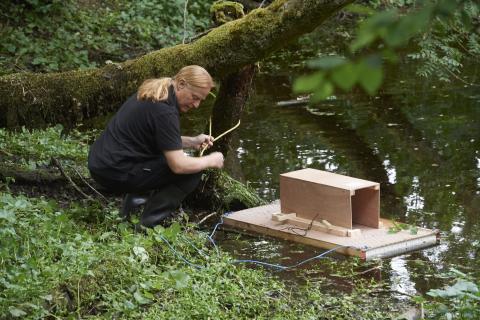
Adopt a mink raft
Mink monitoring rafts are our key tool used in establishing the presence of mink on a river or burn. They float on the edge of the water and an inquisitive mink will enter the tunnel and as it does, stand on the clay pad and leave its footprints—that’s how we know they are there!
Our project officer will supply and help you install your mink raft, you will then need to commit to visiting the raft every 1-2 weeks, checking for the tell-tale mink footprints on the clay pad. We’ll provide everything you need – track identification sheets etc, and if you get footprints you let the project officer know. It’s as simple as that!
The project estimate is that we’ll have in the region of 4-500 mink rafts across rivers throughout northern Scotland, so we do need lots of help to do this!
Read more about our Mink Control Project
Spraying Giant Hogweed and Japanese Knotweed Apr-Oct
Working alongside our qualified staff you can assist with the application of herbicide to Giant hogweed and/or Japanese Knotweed, using knapsack sprayers or stem injectors. All protective clothing, equipment and instruction is provided and regular volunteers can go on to gain their Pesticide Application qualifications (PA1 & PA6).
Read more about the impacts of Giant hogweed and Japanese knotweed and why we are controlling them.
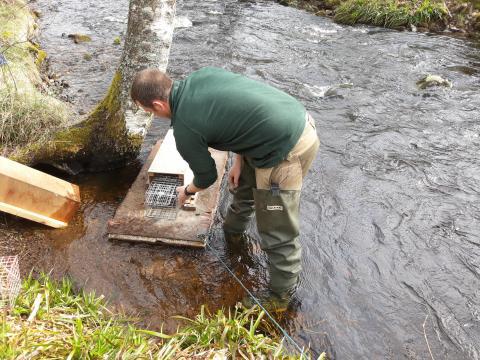
Monitor a mink trap
If mink are present in your area (detected from a mink monitoring raft or reported sightings) our project officers will provide and show you how to set a live capture trap on your mink raft. To operate legally, traps must be checked within every 24hr period they are deployed - without fail. This can be done by volunteers or project staff and the trap can be closed if it cannot be checked for any period greater than 24 hours.
You’ll be provided with the details of your local dispatcher who you will contact if you catch a mink in your trap. This person (it may be your project officer or a local river bailiff, gamekeeper etc) will have been trained and have the equipment to humanely dispatch the mink.
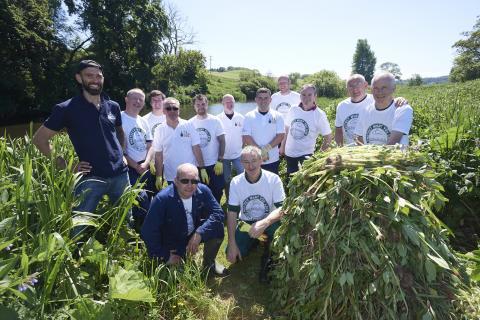
Conservation Volunteer work parties May-Aug
Do you fancy a fun day out in the fresh air, meeting some new people while giving something back to the environment? Then why not join in with one of our led conservation volunteer work parties to remove Himalayan balsam using hand tools. Himalayan balsam is very shallow rooted and can easily be pulled up by hand, or larger plants dug with a spade.
No experience necessary, and we’ll provide refreshments, instruction, supervision and equipment.
If you’re not that active but want to help, come along and take photographs or make the tea, there’s a role for everyone and it’s a wonderful way to get outdoors and meet new friends.
Check our News & Events page for any upcoming conservation days. We can also organise exclusive days like this for local groups, wildlife clubs or corporate groups.
Read more about the impacts of Himalayan balsam and why we are removing it.
There are lots more ways to get involved, keep reading....
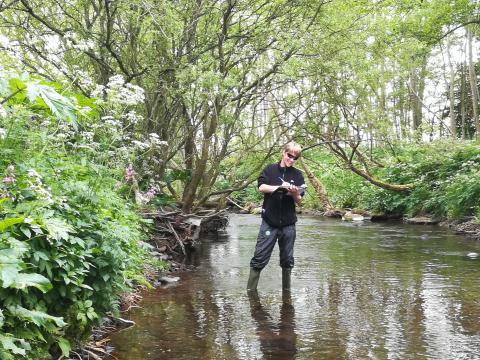
Find the invasive plants!
Although the Fishery Trusts know their rivers well, we are continually hearing of new patches of invasive plants that have been spotted, thanks to the eagle-eyed public. Everyone can help by learning to identify the key invasive plants, and letting us know if you see them.
We’ll also be doing some more formal surveying of rivers, looking for unrecorded invasive plant locations and monitoring how successful removal works have been. We can provide opportunities to learn survey techniques and gain experience in carrying out surveys alongside our staff.
Report an invasive species sighting
If you see a mink or any of our target plant species anywhere in our project areas (see map here) please let us know as soon as possible.
It is especially important that we respond to mink sightings quickly before the mink can disperse across river catchments.
Reporting any non-native species sighting is important to help map their spread and for planning future management and control work.
Report an invasive plant sighting or a mink sighting.
Habitat Restoration
If dense stands of invasive plants have been removed, this can leave behind nothing but bare open ground which may be prone to erosion and look visually unacceptable. While some sites might re-grow naturally, there are some that will need a helping hand. So, we’ll need help to bring these sites back to life by doing things like tree planting, seeding with native grass/wildflower mix or planting native flower plugs.

Follow us on social media
You can support our project from the comfort of your home by following our social media channels and sharing our posts. Together we can get the message out there to encourage others to learn about invasive species and their impacts and highlight the things people can do to help prevent the introduction and spread of invasives.
Twitter - @sisi_project
Facebook - Scottish Invasive Species Initiative (@scottishinvasivespecies)
Instagram - scot_invasive_sps_initiative
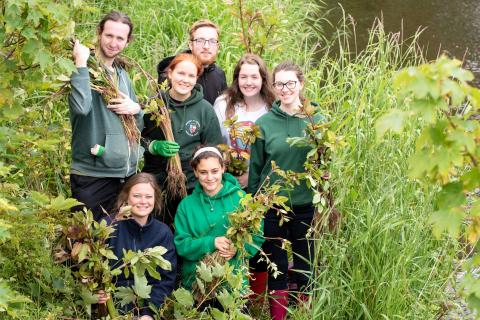
Develop a community invasive plant removal group
We can support existing local groups or help you start a new group to bring local people together to adopt your local river and remove invasive plants, helping you with training and equipment and providing advice as to how to tackle your local invasive species problem.
Other volunteering opportunities
Help us spread the word!
There is a lack of awareness of the impacts and risks that invasive species pose to our countryside. Whether its putting up posters or manning one of our stalls at a local event every little thing helps us to get the message out there.
Can you fly a drone?
You could use your drone to help carry out an aerial survey of a river, checking for invasives species in those hard to get to places.
Photographer? Blogger?
Come along and take photographs at one of our volunteer days, make us a short film about our volunteering opportunities, help us promote the project in a unique way.
Artist?
Use your skills to help us develop some creative programmes and activities to deliver to young people.
Please note – not all opportunities are available in all areas, and some of these only take place at specific times of the year.
Volunteering opportunities are organised and provided by the relevant SISI project officer and/or Fishery Trust officer.
